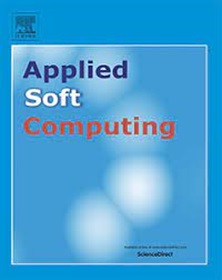Constraint-handling techniques for reusable launch vehicle reentry trajectory optimization using marine predator whale optimizer
IF 7.2
1区 计算机科学
Q1 COMPUTER SCIENCE, ARTIFICIAL INTELLIGENCE
引用次数: 0
Abstract
Reentry trajectory optimization for reusable launch vehicles (RLVs) is a class of optimal control problems with multiple highly nonlinear constraints. Nature-inspired algorithms (NIAs), which can somehow reduce the reliance on initial points, function differentiability, and convexity, with gradient-free nature and ease of implementation, have been actively applied in RLV reentry trajectory optimization problems. As NIAs are primarily designed for unconstrained optimization, constraint-handling techniques (CHTs), which play a crucial role in addressing RLV trajectory optimization issues and significantly impact the overall quality of the solutions, are necessary to guide the search towards feasible regions. However, the existing literature has not yet, or at least not systematically, investigated how well the current CHTs perform. Additionally, an in-depth analysis of parametric approaches and a performance evaluation framework is not yet available. To bridge this gap, this research constructs a benchmark model based on Space Shuttle reentry scenarios, investigates the effects of collocation type and interpolation method, and compares the performance of eight CHTs. An improved marine predator whale optimization algorithm is developed as a direct search engine, with results analyzed using the Wilcoxon signed rank and the Friedman tests. The results show that the ε-constrained technique and multi-objective-based CHTs with the algorithm, are somewhat superior in overall performance, and can produce relatively high-quality solutions over other competitors, while the optimization framework facilitates algorithm integration and CHTs for RLV reentry trajectory optimization problems.
求助全文
约1分钟内获得全文
求助全文
来源期刊

Applied Soft Computing
工程技术-计算机:跨学科应用
CiteScore
15.80
自引率
6.90%
发文量
874
审稿时长
10.9 months
期刊介绍:
Applied Soft Computing is an international journal promoting an integrated view of soft computing to solve real life problems.The focus is to publish the highest quality research in application and convergence of the areas of Fuzzy Logic, Neural Networks, Evolutionary Computing, Rough Sets and other similar techniques to address real world complexities.
Applied Soft Computing is a rolling publication: articles are published as soon as the editor-in-chief has accepted them. Therefore, the web site will continuously be updated with new articles and the publication time will be short.
 求助内容:
求助内容: 应助结果提醒方式:
应助结果提醒方式:


